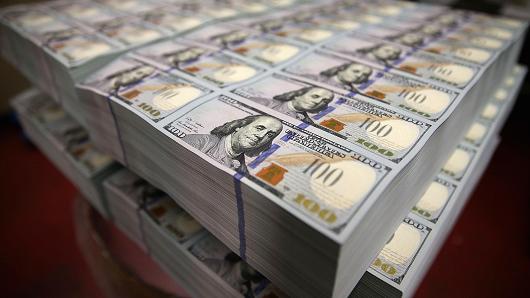The Federal Reserve is slated to release minutes of last month’s meeting today, clarifying the central bank’s decision to stand pat on interest rates. The closer look into the Fed’s inner workings may also help steer investors toward certain exchange traded funds for this ongoing low-yield environment.
Fed Chair Janet Yellen has urged caution on raising rates in light of a slowdown in global markets and falling commodities prices. Consequently, without the specter of interest rate hikes anytime soon, investors may target some asset categories and ETFs to capitalize on a more dovish Fed outlook.
With benchmark 10-year Treasury yields still hovering below 2.0%, investors will turn to riskier assets that generate more attractive yields, like dividend ETFs. Moreover, given the ongoing market volatility and uncertainty, investors may look to the quality and value investment themes, including a group of dividend aristocrats or dividend growers. For instance, the Schwab US Dividend Equity ETF (NYSEArca: SCHD) includes 100 stocks based on strong fundamentals, dividend yields and consistent dividend payouts for at least 10 consecutive years, and it has a 2.93% 12-month yield. The SPDR S&P Dividend ETF (NYSEArca: SDY) holds firms that have a minimum dividend increase streak of 20 years for inclusion and shows a 2.44% 12-month yield. The ProShares S&P 500 Aristocrats ETF (NYSEArca: NOBL) only includes companies that have increased their dividends for at least 25 consecutive years and offers a 1.92% 12-month yield.
Company stocks that issue high yields may be masking their distressed books or may not be sustainable and are heading for dividend cuts. On the other hand, these quality dividend ETFs try to limit the impact of these value traps by selecting components based on a history of sustainable dividend growth.
Alternatively, investors may choose from a number of multi-factor dividend ETFs that select components based on more than quality dividend payers.
For instance, the Elkhorn FTSE RAFI U.S. Equity Income ETF (BATS: ELKU) follows high yield U.S. stocks screened for fundamental factors to target sustainable income. The underlying index screens for financial health based on the return on assets, cash flow to short-term debt plus interest expenses and net operating asset scaled by total assets. Fundamental weights include sales averaged over the prior five years, cash flow averaged over the prior five years, book value at the review date and dividend distribution averaged over the past five years. ELKU’s underlying index shows a dividend yield of 3.55%.
The O’Shares FTSE US Quality Dividend ETF (NYSEArca: OUSA), the first exchange traded fund from “Shark Tank” personality Kevin O’Leary, also combines dividends along with the low volatility and quality factors to lower exposure to high-dividend equities that have experienced large price dips. OUSA’s index has a 3.4% yield.
The FlexShares Quality Dividend Index Fund (NYSEArca: QDF) focuses on the quality factor, which includes a company’s ability to generate free cash, dividend growth and stability. Another element that has been critical to QDF’s success is the emphasis on management efficiency and a company’s ability to generate cash. QDF has a 2.89% 12-month yield.
The Compass EMP US Large Cap High Dividend 100 Volatility Weighted Index ETF (NasdaqGM: CDL) tracks the highest 100 dividend yielding stocks of the CEMP U.S. Large Cap 500 Volatility Weighted Index, which includes stocks that show four quarters of positive earnings and are weighted based on their daily standard deviation, or volatility. The combination of low volatility and positive earnings also reflect stable dividend paying companies. CDL has a 3.33% 30-day SEC yield.
The SPDR Russell 1000 Yield Focus ETF (NYSEArca: ONEY) also includes a combination of core factors like high value, high quality and low size characteristics, along with a high yield characteristic. ONEY’s index dividend yield is 3.52%.
